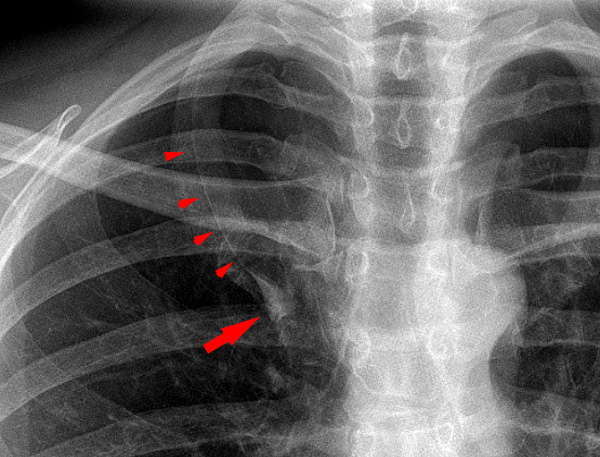[1]
Felson B. The azygos lobe: its variation in health and disease. Seminars in roentgenology. 1989 Jan:24(1):56-66
[PubMed PMID: 2643832]
[2]
Pradhan G, Sahoo S, Mohankudo S, Dhanurdhar Y, Jagaty SK. Azygos Lobe - A Rare Anatomical Variant. Journal of clinical and diagnostic research : JCDR. 2017 Mar:11(3):TJ02. doi: 10.7860/JCDR/2017/25238.9505. Epub 2017 Mar 1
[PubMed PMID: 28511480]
[3]
Nemec J, Heifetz S. Persistence of left supracardinal vein in an adult patient with heart-hand syndrome and cardiac pacemaker. Congenital heart disease. 2008 May-Jun:3(3):219-22. doi: 10.1111/j.1747-0803.2008.00147.x. Epub
[PubMed PMID: 18557888]
[4]
Kotov G, Dimitrova IN, Iliev A, Groudeva V. A Rare Case of an Azygos Lobe in the Right Lung of a 40-year-old Male. Cureus. 2018 Jun 11:10(6):e2780. doi: 10.7759/cureus.2780. Epub 2018 Jun 11
[PubMed PMID: 30112256]
Level 3 (low-level) evidence
[5]
Kobayashi T, Satoh K, Kawase Y, Mitani M, Takahashi K, Nakano S, Ohkawa M, Tanabe M. Bronchial and vascular supply in azygos lobe of inflated fixed lung: a case study. Radiation medicine. 1995 Jan-Feb:13(1):31-3
[PubMed PMID: 7597202]
Level 3 (low-level) evidence
[6]
Ndiaye A, Ndiaye NB, Ndiaye A, Diop M, Ndoye JM, Dia A. The azygos lobe: an unusual anatomical observation with pathological and surgical implications. Anatomical science international. 2012 Sep:87(3):174-8. doi: 10.1007/s12565-011-0119-5. Epub 2011 Oct 28
[PubMed PMID: 22033832]
[7]
Wang J, Li J, Liu G, Deslauriers J. Nerves of the mediastinum. Thoracic surgery clinics. 2011 May:21(2):239-49, ix. doi: 10.1016/j.thorsurg.2011.01.006. Epub
[PubMed PMID: 21477774]
[8]
de Andrade Filho LO, Kuzniec S, Wolosker N, Yazbek G, Kauffman P, Milanez de Campos JR. Technical difficulties and complications of sympathectomy in the treatment of hyperhidrosis: an analysis of 1731 cases. Annals of vascular surgery. 2013 May:27(4):447-53. doi: 10.1016/j.avsg.2012.05.026. Epub 2013 Feb 11
[PubMed PMID: 23406790]
Level 3 (low-level) evidence
[9]
Reisfeld R. Azygos lobe in endoscopic thoracic sympathectomy for hyperhidrosis. Surgical endoscopy. 2005 Jul:19(7):964-6
[PubMed PMID: 15920686]
[10]
Shakir HA. Removal of aberrant azygos lobe containing positron emission tomography positive nodule with the use of video-assisted thoracic surgery. International journal of surgery case reports. 2014:5(2):95-6. doi: 10.1016/j.ijscr.2013.11.015. Epub 2013 Dec 12
[PubMed PMID: 24441715]
Level 3 (low-level) evidence

